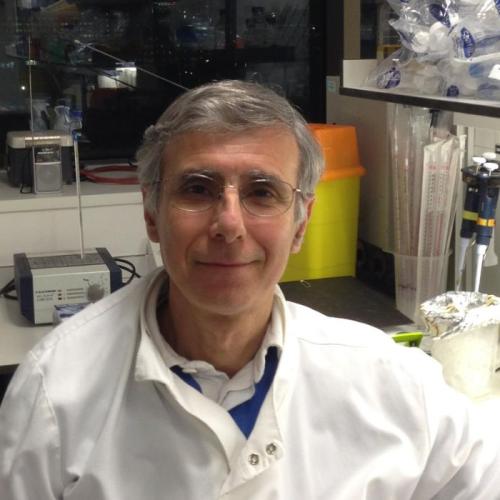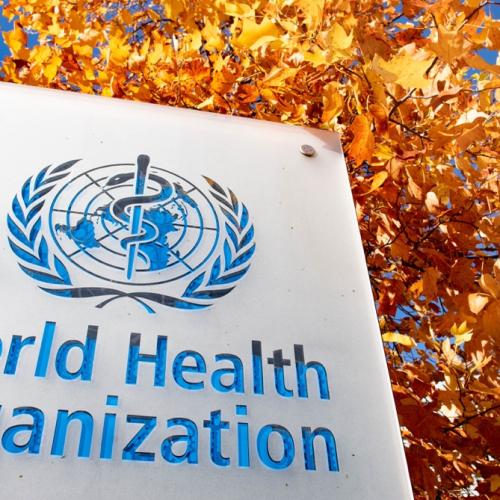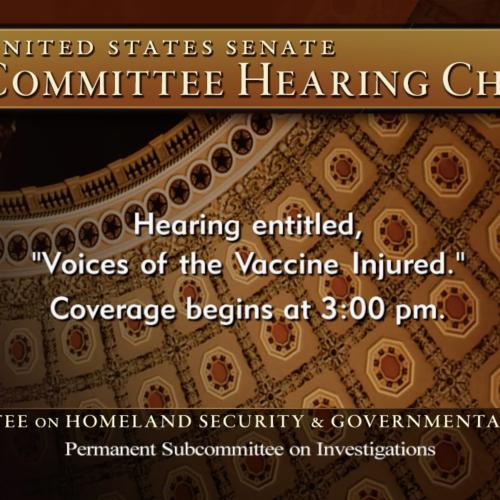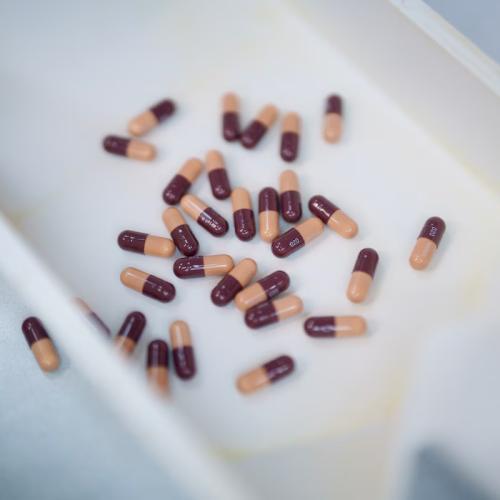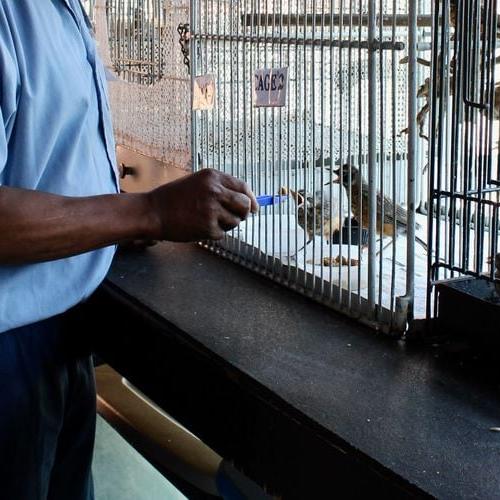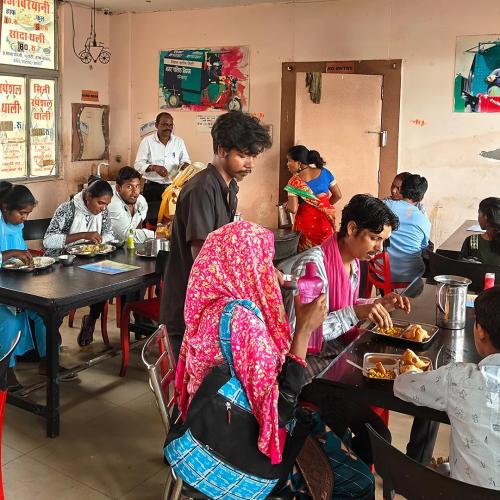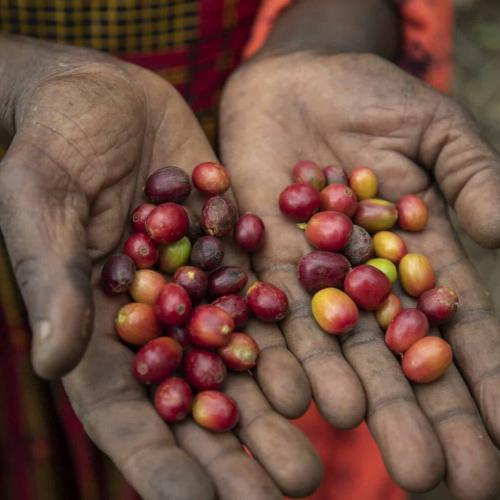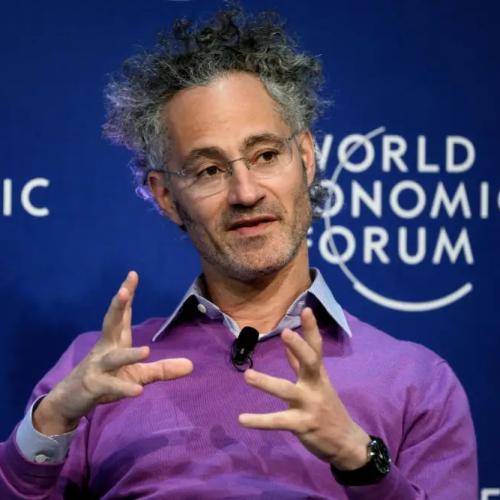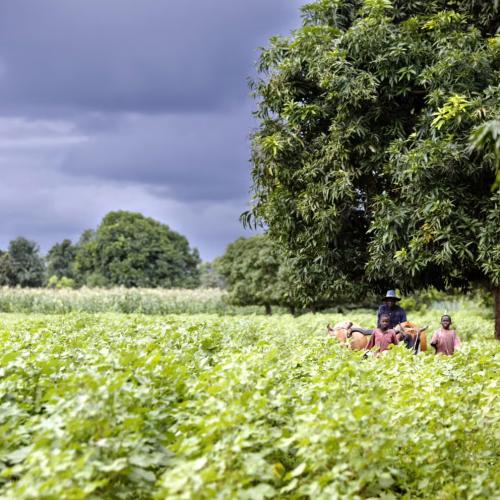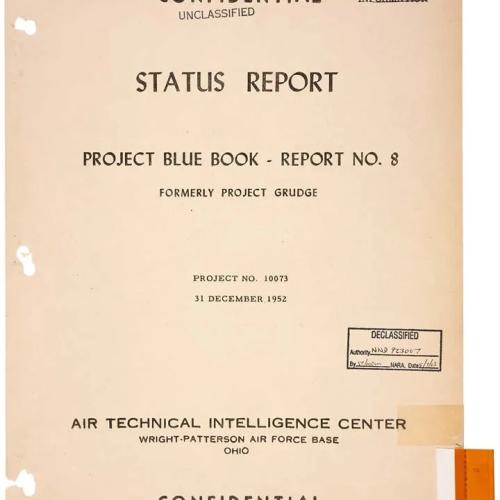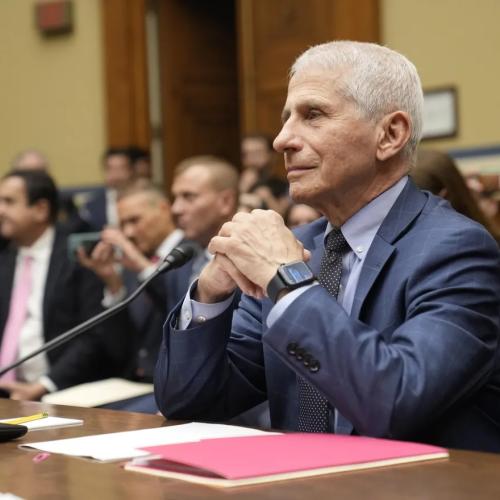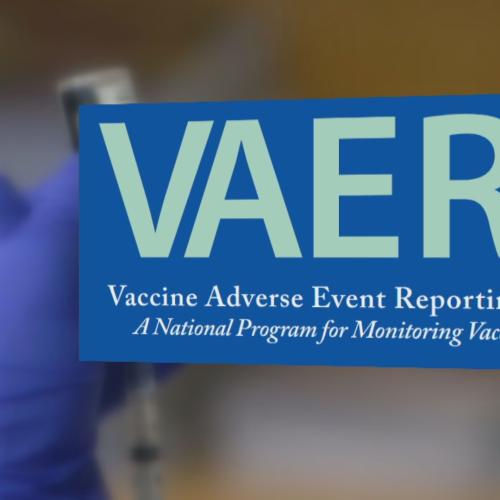Food Corruption News Stories
Below are key excerpts of revealing news articles on food system corruption from reliable news media sources. If any link fails to function, a paywall blocks full access, or the article is no longer available, try these digital tools.
For further exploration, delve into our comprehensive Health and Food Corruption Information Center.
Geoengineering is a technological fix that leaves the economic and industrial system causing climate change untouched. The mindset behind geoengineering stands in sharp contrast to an emerging ecological, systems approach taking shape in the form of regenerative agriculture. More than a mere alternative strategy, regenerative agriculture represents a fundamental shift in our culture’s relationship to nature. Regenerative agriculture comprises an array of techniques that rebuild soil and, in the process, sequester carbon. Typically, it uses cover crops and perennials so that bare soil is never exposed, and grazes animals in ways that mimic animals in nature. It also offers ecological benefits far beyond carbon storage: it stops soil erosion, remineralises soil, protects the purity of groundwater and reduces damaging pesticide and fertiliser runoff. Yields from regenerative methods often exceed conventional yields. Likewise, since these methods build soil, crowd out weeds and retain moisture, fertiliser and herbicide inputs can be reduced or eliminated entirely, resulting in higher profits for farmers. No-till methods can sequester as much as a ton of carbon per acre annually. In the US alone, that could amount to nearly a quarter of current emissions. Ultimately, climate change challenges us to rethink our long-standing separation from nature. It is time to fall in love with the land, the soil, and the trees, to halt their destruction and to serve their restoration.
Note: Don't miss Kiss the Ground, a powerful documentary on the growing regenerative agriculture movement and its power to build global community, reverse the many environmental crises we face, and revive our connection to the natural world. Explore more positive stories like this in our comprehensive inspiring news articles archive focused on solutions and bridging divides.
The 2023 Farm Bill is projected to spend $700 billion over the next five years, with powerful industry lobbyists directing funds to enrich themselves at the expense of agricultural communities, human health, animal welfare, and environmental sustainability. It's far from its original intention: to help struggling farmers and hungry citizens during The Great Depression and Dustbowl. Most Americans have never heard of this massive omnibus bill, which Congress reauthorizes every five or so years. It shapes our food system–from subsidizing factory farms to funding food and nutrition programs, and it is why burgers are artificially cheap and salads cost more than they should. How did this happen? After World War II, to meet the needs of a booming U.S. population and a growing export market, the Farm Bill invested heavily in monocrops, including millions of acres of corn and soy, used to feed animals on industrialized farms. We subsidize the overproduction of fat-laden animal products and highly processed foods, making unhealthy food cheap and accessible. This contributes to heart disease and other chronic diet-related illnesses that cost our nation billions of dollars annually in preventable health care costs. Nine out of 10 U.S. adults do not consume nutritionists' recommended fruits and vegetables. The Farm Bill should invest in enterprises that act with integrity, not unethical profiteers who lobby for unconstitutional "ag-gag" laws that prevent free speech, transparency, and accountability.
Note: For more along these lines, see concise summaries of deeply revealing news articles on corruption in government and in the food system from reliable major media sources.
The pesticide companies Bayer and Syngenta have been excoriated in a European parliament hearing after failing to disclose studies on the brain toxicity of their products. European regulators said the companies had breached legal obligations and behaved unethically. The withholding of nine brain toxicity studies from European regulators over the last 20 years was revealed by the Guardian in June, reporting findings from Swedish academics. They discovered that these toxicity studies had been submitted to the US pesticide regulator but not to the EU authorities. Dr Axel Mie, of Stockholm University, who led the research ... told a special hearing in the European parliament on Tuesday: "If a company decides by themselves which studies to disclose and which ones to withhold, it is obvious that the decisions by the [regulatory] authorities become unreliable." He said risk management decisions had been delayed by 18 years in one case. MEPs were scathing about the companies. The Swedish MEP Emma Wiesner, a member of the European parliament's committee on the environment, public health and food safety, said: "The behaviour found in this study is really unacceptable. More than a quarter of the studies [sent to US authorities] were not sent into the European agencies – that is outrageous." Martin H¤usling, a German MEP and member of the agriculture committee, said: "This is a right old scandal. These [are] clear breaches of existing law and previous law. And yet there are no consequences."
Note: For more along these lines, see concise summaries of deeply revealing news articles on corruption in the corporate world and in the food system from reliable major media sources.
President Joe Biden announced that his administration planned to scrutinize a Trump-era decision to allow the continued use of chlorpyrifos, a pesticide that can damage children's brains. The Environmental Protection Agency went on to ban the use of the chemical on food. Yet when officials from around the world gathered in Rome last fall to consider whether to move forward with a proposed global ban on the pesticide, chlorpyrifos had a surprising defender: a senior official from the EPA. Karissa Kovner, a senior EPA policy adviser, is a key leader of the U.S. delegation at a United Nations body known as the Stockholm Convention, which governs some of the worst chemicals on the planet. Kovner made it clear that the U.S. was not ready to support taking the next step through the convention to provide similar protections for the rest of the world. The U.S. is known for throwing a wrench into the international convention's efforts to restrict pollutants. "They're usually seen as a country that raises objections to the regulation of chemicals," said [attorney] David Azoulay. Chlorpyrifos is so harmful that the American government not only banned its use on food but also barred the import of fruits and vegetables grown with it. Persistent organic pollutants ... lodge in fat cells, allowing them to spread from contaminated animals to anything that eats them. Humans sit at the top of this polluted food pyramid, and we can pass the chemicals to our babies through the umbilical cord before birth and through breast milk afterward.
Note: Did you know that chlorpyrifos was originally developed by Nazis during World War II for use as a nerve gas? Read more about the history and politics of chlorpyrifos, and how U.S. regulators relied on falsified data to allow its use for years. For more along these lines, see concise summaries of deeply revealing news articles on corruption in government and in the food system from reliable major media sources.
New York state on Friday became the first state in the nation to pass legislation restricting neonicotinoid pesticides (neonics) that are toxic to bees and other pollinators and wildlife. The Birds and Bees Protection Act would eliminate 80 to 90% of the neonics used in New York each year by banning applications that are either easily replaceable or do not give an economic boost to farmers. "Every year for the past decade, New York beekeepers have lost more than 40% of their bee colonies–largely due to neonic pesticides," bill sponsor State Senator Brad Hoylman-Sigal said in a statement. "Today, in this landmark victory for our pollinators, economy, and farming industry, New York is working to reverse that trend." The bill ... bans the use of neonics to coat corn, soybean, and wheat seeds as well as for lawns and gardens. Neonics are a class of pesticides that work by attacking the nervous systems of insect pests. A lethal dose will cause paralysis and death, while non-lethal effects include memory, immune, navigation, and fertility problems. They are one of the deadliest pesticides out there, yet they are also the leading insecticide used in the U.S. This is a problem because about 95% of neonics used to coat seeds don't enter the plant at all, but instead spread into the environment via the soil, where they do not break down easily. They also harm the development of birds and mammals; and studies have linked ingredients of neoicotinoid insecticides with adverse human health outcomes as well.
Note: For more along these lines, see concise summaries of deeply revealing news articles on food system corruption and health from reliable major media sources.
In South Los Angeles, Crop Swap LA volunteers and staffers harvested bags of freshly picked produce from the front yard of a residence. "Everything we're growing is nutrient-dense and the food remains in the neighborhood," says Jamiah Hargins, who founded Crop Swap LA in 2018 as a small monthly swap of surplus produce. After spending years in finance and consulting, Hargins decided to create a local food distribution system to address the fact that his neighborhood was a food desert, meaning most residents have little access to healthy food. It's now one of many Bipoc-led groups across the US that are reclaiming their agricultural heritage and redefining the local food movement by growing on traditional farms and unconventional spaces such as yards, medians and vacant lots as a way to increase food security and health in their own communities. There are similar groups run by communities of color across the US. After the Chicora-Cherokee community in North Charleston, South Carolina, was left without a grocery store for more than 10 years, Fresh Future Farm stepped in. Founded in 2014, the non-profit transformed a vacant lot into a flourishing urban farm that grows bananas, sugarcane, meyer lemons, satsuma oranges, collard greens, okra and tomatoes, among other crops. Two years later, it opened a sliding scale grocery store on the same property – the first one in the area in 11 years. The non-profit also teaches home gardening classes, which is inspiring a new crop of home growers.
Note: Explore a treasure trove of concise summaries of incredibly inspiring news articles which will inspire you to make a difference.
Every day, farms across the country use a potentially cancer-causing chemical that is in the world’s most common weedkillers. And data shows that it’s most used in the Midwest and parts of the South. Glyphosate, the active ingredient in many herbicides, has been in use for nearly 50 years. The World Health Organization’s International Agency for Research on Cancer concluded in a 2015 report that the chemical “is probably carcinogenic to humans.” Glyphosate’s main use is in agriculture. Weedkillers containing it are used on nearly half of all planted acres of corn and soybeans in the U.S. They’re also used on acres of farmland where wheat, oats, fruits and cotton are grown. Pesticide residue testing from the FDA found glyphosate residues on a wide variety of crops, including oats, soybeans, cranberries, grapes, raisins, oranges, apples, cherries and beans. A 2020 Department of Health and Human Services report notes that the greatest potential exposure is among farm workers and gardeners that use glyphosate-based herbicides and those who live near farms, manufacturing plants ... and hazardous waste disposal sites. For the general public, the report notes that exposure to glyphosate typically comes by touching or eating food or water containing residues. Some studies have found a link between increased cancer rates and higher levels of exposure. Several peer-reviewed studies have also suggested that herbicides containing glyphosate may disrupt hormones and alter the gut microbiome.
Note: Don't miss the interactive map of glyphosate usage available at the link above. For more along these lines, see concise summaries of deeply revealing news articles on food system corruption and health from reliable major media sources.
Recycled and reused food contact plastics are "vectors for spreading chemicals of concern" because they accumulate and release hundreds of dangerous toxins like styrene, benzene, bisphenol, heavy metals, formaldehyde and phthalates, new research finds. The study assessed hundreds of scientific publications on plastic and recycled plastic to provide a first-of-its-kind systematic review of food contact chemicals in food packaging, utensils, plates and other items and what is known about how the substances contaminate food. "Hazardous chemicals can accumulate in recycled material and then migrate into foodstuffs, leading to chronic human exposure," the study's authors wrote, noting bottles made from polyethylene terephthalate (PET) plastic as a common example. The study ... identified 853 chemicals used in PET recycled plastic and many of those have been discovered during the last two years. The most commonly detected were antimony and acetaldehyde, while potent toxins like 2,4-DTBP, ethylene glycol, lead, terephthalic acid, bisphenol and cyclic PET oligomers were also most frequently found. The review also highlighted widespread "illicit" recycling in which industry uses non-food grade plastic made with flame retardants and other toxic compounds in recycled food packaging. Despite strict regulations on which types of plastic can be used for food contact, studies identified [contaminated materials from] recycled electronics in the US, South Korea and European markets.
Note: For more along these lines, see concise summaries of deeply revealing news articles on food system corruption and health from reliable major media sources.
The US Environmental Protection Agency has in effect ignored a 2020 federal court order prohibiting the use of Monsanto and other producers' toxic dicamba-based herbicides that are destroying millions of acres of cropland, harming endangered species and increasing cancer risks for farmers, new fillings in the lawsuit charge. Instead of permanently yanking the products from the market after the 2020 order, the EPA only required industry to add further application instructions to the herbicides' labels before reapproving the products. A late 2021 EPA investigation found the same problems persist even with new directions added to the label, but the agency still allows Monsanto, BASF and other producers to continue using dicamba. The EPA's pesticide office is included in allegations that career managers are influenced by or have colluded with industry, and in some cases falsified science to make dangerous substances appear less toxic. About one-third of the pesticide office's funding comes from industry fees. The agency in 2016 approved the dicamba-based herbicide developed by Monsanto, which was to be used on genetically modified soybean and cotton crops. The herbicide can damage or kill neighboring crops and plants that are not engineered to be dicamba-resistant. The results are "devastating" and destroying millions of acres as "as never before seen in the history of US agriculture", the plaintiffs said. In some cases, direct dicamba exposure can kill insects, mammals and other animals.
Note: For more along these lines, see concise summaries of deeply revealing news articles on corruption in government and in the food system from reliable major media sources.
For almost five decades, [Dr. Vandana] Shiva has been deeply engaged in the fight for environmental justice in India. Regarded as one of the world's most formidable environmentalists, she has worked to save forests, shut down polluting mines, exposed the dangers of pesticides, spurred on the global campaign for organic farming, championed ecofeminism and gone up against powerful giant chemical corporations. Her battle to protect the world's seeds in their natural form – rather than genetically altered and commercially controlled versions – continues to be her life's work. "I couldn't understand why were we told that new technology brings progress, but everywhere I looked, local people were getting poorer and landscapes were being devastated as soon as this development or new technology came in," she says. "No one was stopping to ask: what will be the impact on the environment? What will this cost the farmers? They only wanted to win the race and control all the world's seeds." Currently more than 60% of the world's' commercial seeds are sold by just four companies, which have led the push to patent seeds, orchestrated a global monopoly of certain [genetically modified] crops such as cotton and soya and sued hundreds of small-scale farmers for saving seeds from commercial crops. Shiva considers her most important work to be her travels through India's villages, collecting and saving seeds ... setting up more than 100 seed banks, and helping farmers return to organic methods.
Note: The Seeds of Vandana Shiva is an excellent documentary that reveals the remarkable life story of Dr. Shiva, her significant influence in creating an international food justice movement, and how she stood up to the big players of industrial agriculture. For more along these lines, see concise summaries of deeply revealing news articles on GMOs and food system corruption from reliable major media sources.
More than half of the world’s population will be overweight or obese by 2035 unless governments take decisive action to curb the growing epidemic of excess weight, a report has warned. About 2.6 billion people globally – 38% of the world population – are already overweight or obese. But on current trends that is expected to rise to more than 4 billion people (51%) in 12 years’ time, according to research by the World Obesity Federation. Obesity among children and young people is on course to increase faster than among adults. By 2035 it is expected to be at least double the rate seen in 2020, according to the federation’s latest annual World Obesity Atlas report. It is expected to rise by 100% among boys under 18, leaving 208 million affected, but go up even more sharply – by 125% – among girls the same age, which would see 175 million of them affected. The federation is an alliance of health, scientific, research and campaign groups, and works closely on obesity with various global agencies. It wants governments to use tax systems; restrictions on the marketing of foods that are high in fat, salt or sugar; front-of-pack labels; and provision of healthy food in schools to address rising obesity. The federation’s report also highlights that many of the world’s poorest countries are facing the sharpest increases in obesity yet are the least well prepared to confront the disease. Nine of the 10 countries set to experience the biggest rises in coming years are low- or middle-income nations in Africa and Asia.
Note: Nutritional policy in the US is heavily influenced by processed foods manufacturers. For more along these lines, see concise summaries of deeply revealing news articles on health from reliable major media sources. Then explore the excellent, reliable resources provided in our Health Information Center.
In 2013, the European Union called for a temporary suspension of the most commonly used neonicotinoid-based products on flowering plants, citing the danger posed to bees — an effort that resulted in a permanent ban in 2018. In the U.S., however, industry dug in, seeking not only to discredit the research but to cast pesticide companies as a solution to the problem. Lobbying documents and emails ... show a sophisticated effort over the last decade by the pesticide industry to obstruct any effort to restrict the use of neonicotinoids. Bayer and Syngenta, the largest manufacturers of neonics, and Monsanto, one of the leading producers of seeds pretreated with neonics, cultivated ties with prominent academics ... and other scientists who had once called for a greater focus on the threat posed by pesticides. A study published in peer-reviewed journal PLOS One found that the American landscape has become 48 times more toxic to insects since the 1990s, a shift largely fueled by the rising application of neonics. “Generally, we see the U.S. waiting longer than the EU to take action on a variety of pesticides and other chemicals,” said [Willa] Childress ... with Pesticide Action Network North America. Part of the divergence, Childress continued, stems from a regulatory system in the U.S. that assumes chemical products are generally safe until proven hazardous. In contrast, the EU tends to use the “precautionary principle,” removing products that may cause harm.
Note: Merchants of Poison: How Monsanto Sold the World on a Toxic Pesticide is a recent and comprehensive analysis of documents released in litigation against Monsanto and their dangerous use of glyphosate. These revealing documents expose years of pesticide industry disinformation, attacks on scientists and journalists, and Monsanto’s deep influence on US regulatory agencies to manipulate science and prioritize profits over public health. For more along these lines, see concise summaries of deeply revealing news articles on corruption in science and in the food system from reliable major media sources.
Microplastics have infiltrated every part of the planet. One study estimated that there are around 24.4 trillion fragments of microplastics in the upper regions of the world's oceans. But they aren't just ubiquitous in water – they are spread widely in soils on land too and can even end up in the food we eat. Unwittingly, we may be consuming tiny fragments of plastic with almost every bite we take. In 2022, analysis by the Environmental Working Group, an environmental non-profit, found that sewage sludge has contaminated almost 20 million acres (80,937sq km) of US cropland with per- and polyfluoroalkyl substances (PFAS), often called "forever chemicals", which are commonly found in plastic products and do not break down under normal environmental conditions. Sludge is commonly used as organic fertiliser in the US and Europe. Due to this practice ... between 31,000 and 42,000 tonnes of microplastics, or 86 trillion to 710 trillion microplastic particles, contaminate European farmland each year. Plastic particles can also contaminate food crops directly. A 2020 study found microplastics and nanoplastics in fruit and vegetables sold by supermarkets and in produce sold by local sellers. Crops absorb nanoplastic particles from surrounding water and soil through tiny cracks in their roots. Chemicals found in plastic have been linked to cancer, heart disease and poor fetal development. High levels of ingested microplastics may also cause cell damage which could lead to inflammation and allergic reactions.
Note: There seems to be no part of the planet that is unaffected by the pervasiveness of microplastics, from being found in human veins, human lungs, flying insects, and in 90% of table salt, to heavily polluting our skies and now spiraling around the globe through Earth’s atmosphere. Read more on simple ways that you can reduce microplastic pollution and consumption in your life, and support the many organizations making a meaningful difference to address this issue.
Regenerative agriculture is an approach to farming that prioritises soil and environmental health by minimising synthetic inputs. [Farm manager Tim Parton] switched to using biologically active inputs after experiencing headaches and skin rashes from using pesticides. After sheep dipping, which involves immersing sheep in insecticide and pesticide mixtures to eliminate parasites, lumps would often show up on his arms. "I would be a mess, but if I went to the doctors, they would say 'you've just had a reaction' and would not take it seriously," he says. Since adopting a biological farming method, Parton has not experienced any negative health impacts. He has not had to use any phosphorus and potassium fertilisers on his crops for over 10 years. He says he has observed a big increase in insect and bird species since he stopped using pesticides. Pesticides may be responsible for the loss of smell in honeybees and salmon. Despite global regulations on pesticide use, one study estimates that about 385 million cases of unintentional, acute pesticide poisoning occur among farm workers each year. A 2020 study found that of the estimated 860 million agricultural workers worldwide, 44% are affected by pesticide poisoning annually. Acute health impacts can range from seizures to respiratory depression. Pesticide exposure has been associated with conditions such as attention deficit hyperactivity disorder (ADHD) and Parkinson's disease. Pesticide exposure has also been linked to sensory deterioration.
Note: For more along these lines, see concise summaries of deeply revealing news articles on food system corruption and health from reliable major media sources.
According to the World Health Organization definition, 1.9 billion adults are considered overweight. Of these, more than 650 million people are classified as obese. In Australia, health authorities suggest being overweight is more dangerous to us than alcohol, and only second in “preventable health risk” to smoking. ABS health data claims 67% of Australian adults are overweight, an increase on 63.4% a decade ago. Last year, Australia’s former conservative government released a “National Obesity Strategy”, concerned Australia was facing health risks of cardiovascular disease, type 2 diabetes, and cancers. That government did recognise weight is influenced by complex “social, environmental, and economic factors”, but their framework of encouraging “healthy choices” as a remedy unhelpfully individualises a collective problem. First, shaming individuals into weight loss doesn’t work. 95% of weight loss attempts fail. Two-thirds of dieters regain the weight they lose. Second, the structural giveaway here is an admission that the poorest “experience the greatest burden of disease linked to excess weight”. Our societies have never produced so much food, yet we live in a capitalist perversion where fresh, healthy food – and the time to prepare it – are priced as a luxury, while highly processed items are inexpensive, easy and aggressively mass-marketed. It’s not a failure of collective willpower that’s jeopardising our health, but a diet of bad food that’s culturally familiar, low in nutrition and super available.
Note: For more along these lines, see concise summaries of deeply revealing news articles on food system corruption from reliable major media sources.
Environmental groups on Tuesday accused the Biden administration of putting the profits of big agribusiness over public health and critical pollinators by attempting to obstruct the Mexican government's ongoing push to ban genetically engineered corn. The U.S. government claims that Mexico's plans, which have also drawn fierce opposition from industry lobbying groups, would run afoul of provisions in the United States-Mexico-Canada Agreement (USMCA) and harm American farmers. The Biden administration has threatened to take legal action under the USMCA if Mexico doesn't reverse course. The USMCA entered into force in 2020 and replaced the North American Free Trade Agreement (NAFTA), under which U.S. corn flooded the Mexican market. An estimated 90% of U.S. corn production is genetically modified. But Mexico—the largest destination for U.S. corn exports—reiterated its intention to prohibit GE corn for human consumption by 2024 in its latest decree. Mexico is also aiming to ban imports and use of glyphosate, a cancer-linked chemical that is often sprayed on genetically engineered corn. In February 2021, The Guardian reported that "internal government emails reveal Monsanto owner Bayer AG and industry lobbyist CropLife America have been working closely with U.S. officials to pressure Mexico into abandoning its intended ban on glyphosate, a pesticide linked to cancer that is the key ingredient in Monsanto's Roundup weedkillers."
Note: For more along these lines, see concise summaries of deeply revealing news articles on food system corruption and GMOs from reliable major media sources.
At Radical Family Farms, Leslie Wiser recently planted bitter melons, what she refers to as “one of our most beloved crops”, a staple in many types of Asian cuisine that grows on a vine and is related to zucchini, squash and cucumber. Women like Wiser are increasingly the face of farming in California, and nationally as well. Experts say the growing presence of women in agriculture is having an impact on how the industry operates, especially in the face of generational challenges like pandemics and climate change, with research showing that women-led businesses are more likely to take a community-minded approach to how they operate and fill in gaps during crises. During the pandemic, for example ... women farmers filled the gaps in local communities for food access. Radical Family Farm stepped in to feed food-insecure seniors throughout the Bay Area when it was not safe for them to go to the grocery store or farmers’ market. “A lot of this was driven by the attacks on our Asian elders during the pandemic,” Wiser said. “It’s still happening, with seniors afraid to walk on the streets.” Her long-term goal is to dedicate one-third of the produce from her farm to seniors in the Bay Area. “It is part of my cultural heritage to honor our elders,” she said, adding that her grandparents on both sides took care of her growing up, so delivering “culturally relevant produce” to seniors is meaningful. “Instead of getting bags of potatoes, they can get vegetables, produce and herbs that are familiar to them.”
Note: Explore a treasure trove of concise summaries of incredibly inspiring news articles which will inspire you to make a difference.
Ants can be more effective than pesticides at helping farmers produce food, according to new research. They are better at killing pests, reducing plant damage and increasing crop yields, according to the first systematic review of ants’ contributions to crop production. Ants are generalist predators and hunt pests that damage fruits, seeds and leaves, leading to a drop in crop yields. A greater diversity of ants generally provides more protection against a wider range of pests, the study found. The analysis looked at 17 crops, including citrus, mango, apple and soya bean in countries including the US, Australia, the UK and Brazil. “In general, with proper management, ants can be useful pest controls and increase crop yield over time. Some ant species have similar or higher efficacy than pesticides, at lower costs,” researchers wrote in the paper published in Proceedings of Royal Society B. There are more ants than any other insect, making up half of the planet’s insect biomass. There are at least 14,000 known species of ant, with many more likely to remain unknown. Citrus growers in China have used ants in farming for centuries, and the insects have also been used to help control forest pests in Canada, cocoa pests in Ghana and crop pests in Nigeria. Dr Patrick Milligan, from the University of Nevada Pringle Lab ... said the findings were “both heartening and not at all surprising”. He added: “They offer a neat and tidy description of ant-derived benefits that are ubiquitous across ecological and agricultural systems.
Note: Explore a treasure trove of concise summaries of incredibly inspiring news articles which will inspire you to make a difference.
The situation for India’s more than 260 million agricultural workers is dire. Nearly 30 people in the farming sector die by suicide daily, according to the most recent figures available, typically due to overwhelming debt. Indeed in 2020, more than 10,000 people in the agricultural sector ended their own lives, according to government data. India’s economic backbone – its farmers and their families – is in collapse. They face crushing pressures: insurmountable debt, environmental degradation, and extreme rates of cancer linked to exposure to pesticides. This strain is compounded by climate change and extreme weather – from ground water depletion to water shortages and crop damage due to rising temperatures – effects which have been tied to increasing suicides in India. Many are subsistence farmers who are drowning in the volatility caused by the Green Revolution which began in the 1960s as a way of industrializing the agriculture sector with high yielding seeds, mechanized tools and pesticides. In some cases, farmers cannot work their land due to illness linked to the revolution’s pesticides and fertilizers. They are dealing with deep-rooted battles against multinational corporations. And all the while having to take out loans each year to make the agricultural cycle possible. And then, when farmers are unable to get loans from legitimate banks, illegal moneylenders ... step in, charging exorbitant interest rates and creating an inescapable debt-trap for farmers, in some instances pushing them to suicide.
Note: Watch a compelling talk by food sovereignty advocate Vandana Shiva, who explains how the "Green Revolution" doesn't bring any gain in food security, and has done more harm than good in India. For more along these lines, see concise summaries of deeply revealing news articles on food system corruption from reliable major media sources.
Near the southern border of the Pine Ridge Reservation in South Dakota, a curved translucent roof peeks out a few feet above the dusty plains. Below ground, at the bottom of a short flight of stairs, the inside of this 80ft-long sleek structure is bursting with life – pallets of vivid microgreens, potato plants growing from hay bales and planters full of thick heads of Swiss chard and pak choi. This is an underground greenhouse, or walipini, and the harvesters are members of the Oglala Sioux Tribe. It is one of at least eight underground greenhouses that, over the past decade, have been built or are being constructed on the reservation – which has one of the highest poverty rates in the US. Some hope they can help solve the interconnected problems of the lack of affordable, nutritious food and the difficulties of farming in the climate crisis. Today, more than half of the residents of Oglala Lakota county, one of three counties within the boundaries of the reservation, live below the poverty line. Food access is a huge problem. The 2.1m-acre reservation is classified as a “food desert” with only a handful of grocery stores. And health outcomes, including diet related diseases, are poor – about 50% of adults over 40 have diabetes. Neil Mattson, professor and greenhouse extension specialist at Cornell University’s School of Integrative Plant Science, says underground greenhouses could help to usher in more year-round food production across the northern US but they are still fairly new in the country.
Note: Explore a treasure trove of concise summaries of incredibly inspiring news articles which will inspire you to make a difference.
Important Note: Explore our full index to revealing excerpts of key major media news stories on several dozen engaging topics. And don't miss amazing excerpts from 20 of the most revealing news articles ever published.













